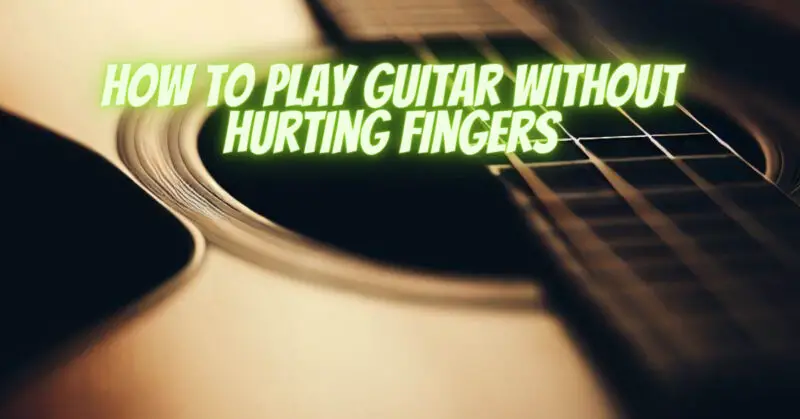Learning to play the guitar is an exciting journey that can bring immense joy and satisfaction. However, many beginners often experience discomfort and pain in their fingertips as they develop calluses and adjust to the strings. In this article, we will explore some practical tips and techniques to help you play the guitar without hurting your fingers, allowing for a more enjoyable and pain-free learning experience.
- Start with Lighter Gauge Strings: Consider using lighter gauge strings when starting out. Lighter strings require less pressure to press down on the fretboard, reducing strain on your fingertips. As you build up finger strength and calluses, you can gradually move to heavier gauge strings if desired.
- Proper Finger Placement: Ensure that you are positioning your fingers correctly on the fretboard. Place your fingertips just behind the fretwire, where the string makes contact with the fret. This minimizes the effort required to press down on the strings, reducing finger discomfort.
- Gradual Practice Sessions: Avoid overdoing it during practice sessions, especially when you are just starting out. Instead of long, intense practice sessions, aim for shorter, regular sessions throughout the day. This allows your fingertips to rest and recover between sessions, gradually building endurance.
- Use Finger Exercises: Incorporate finger exercises into your practice routine to strengthen your fingers and develop dexterity. Scales, chromatic exercises, and finger-stretching exercises can improve finger strength, coordination, and flexibility, reducing the strain on your fingertips.
- Take Breaks: It’s essential to give your fingers regular breaks during practice sessions. Overplaying without breaks can lead to increased discomfort and potential injury. Take short breaks to allow your fingertips to recover and rejuvenate.
- Use a Guitar with Low Action: Action refers to the distance between the strings and the fretboard. A guitar with low action requires less force to press down the strings, reducing finger strain. If your guitar has high action, consider having it professionally set up or adjusted to lower the action.
- Proper Hand and Wrist Positioning: Maintaining proper hand and wrist positioning is crucial for minimizing finger discomfort. Keep your wrist straight and avoid excessive bending or arching. This allows for better finger control and reduces unnecessary strain on your fingertips.
- Regularly Trim Your Nails: Ensure that you keep your fingernails trimmed short. Long nails can interfere with proper finger placement and cause additional discomfort when pressing down on the strings.
- Develop Calluses: With consistent practice, your fingertips will naturally develop calluses, which are hardened areas of skin. These calluses provide a protective layer, reducing sensitivity and discomfort. Embrace the process and allow time for your calluses to form.
- Listen to Your Body: Pay attention to your body’s signals. If you feel persistent pain or discomfort that worsens over time, take a break and allow your fingers to rest and recover. Pushing through intense pain can lead to injuries and hinder progress.
Conclusion:
Playing the guitar should be an enjoyable and fulfilling experience. By implementing these tips and techniques, you can minimize finger discomfort, develop strength and dexterity, and progress on your guitar-playing journey. Remember to be patient, listen to your body, and allow for gradual progress. With time, practice, and proper technique, you can play the guitar without hurting your fingers and unlock your musical potential.


